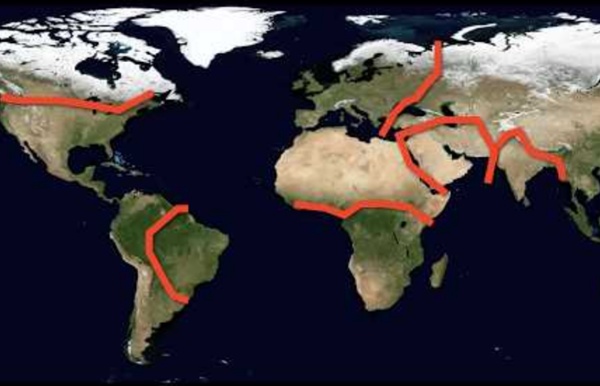



http://www.youtube.com/watch?v=3uBcq1x7P34
Elections in Action Lessons Whether you are teaching about this spring's primaries or planning to cover the midterms this November, the latest version of Mikva's Election in Action lessons is now available. To receive a *FREE* pdf version of these lessons (designed for middle and high schoolers), please click here to complete a short request form. You will then receive them by email within 24 hours. (Click the following icon to download a Table of Contents for this curriculum: 2014_Elections_table_of_contents.pdf (69 KB) .) Rock the Vote's Democracy Class Rock the Vote's Democracy Class Rock the Vote's Democracy Class is a one-period, civics education lesson plan that teaches high school students about the importance of voting, the history behind it, and registers them to vote. Campaign Ads: Create Your Own and Analyze Others Teaching Campaign Finance Additionally, you can click here to find the NYTimes' guide about the different ways one can make political donations. Listen to Me 50 States' Voting Laws in One Place
Revitalizing Civic Learning in Our Schools Approved by the NCSS Board of Directors 2013 Introduction As Thomas Jefferson, Horace Mann, John Dewey and other great educators understood, public schools do not serve a public so much as create a public.1* The goal of schooling, therefore, is not merely preparation for citizenship, but citizenship itself; to equip a citizenry with the knowledge, skills, and dispositions needed for active and engaged civic life. The National Council for the Social Studies firmly agrees with this premise and believes that no other subject area is better suited to achieve this essential goal in schools than the social studies. Intended Audience This position statement is intended for all audiences who are committed to preparing students for active and engaged citizenship in the 21st century. Background Globalization and rapid technological advancements in the 21st century are profoundly impacting our democracy and conceptualization of what it means to be a productive member of society. Implementation
History and Geography Devising Real-World Activities for Adolescent History Students A MiddleWeb Blog Every year, at least half a dozen students ask me some variation of the following question: “Why do we need to take history? How am I going to use this in real life?” It is a question any good history teacher can answer, but often not to the satisfaction of the adolescent mind. There is little room in their worldview for the big picture. It’s a Small World Because of the developmental narcissism of my students, I try to make sure any real-world activities resonate with their immediate interests. My goal is to show them how they can utilize the skills and knowledge acquired in the classroom to analyze, plan and execute a plan of action in pursuit of a concrete goal. Petition, Assemble, Speak My real-world activity this year was centered on the First Amendment to the United States Constitution. To create the petition, I first had students brainstorm their concerns about the school. Once we had settled on an issue, we wrote the petition as a class.
Civics and Government, and Economics BRINGING IT ALL TOGETHER Social Media for Teachers: Guides, Resources and Ideas Although students are evermore connected to the social web, many of these networks remain out-of-class digital playgrounds where students congregate. In a 2014 survey of 1,000 teachers, just one in five said they use social media regularly with students. Of course, it can be a challenge to incorporate social media into lessons. There are many gray areas for teachers to navigate, like setting guidelines, accessibility at school, and student safety. But to help teachers navigate this ever-changing landscape of social media tools, here are some of the best guides on the web for four popular networks, Facebook, Instagram, Twitter, and Pinterest. More Great Reads From Edutopia In addition to those great guides, there is a lot of useful information right here on Edutopia.
Cube Creator Summarizing information is an important postreading and prewriting activity that helps students synthesize what they have learned. The interactive Cube Creator offers four options: Bio Cube: This option allows students to develop an outline of a person whose biography or autobiography they have just read; it can also be used before students write their own autobiography. Specific prompts ask students to describe a person's significance, background, and personality. Mystery Cube: Use this option to help your students sort out the clues in their favorite mysteries or develop outlines for their own stories. Story Cube: In this cube option, students can summarize the key elements in a story, including character, setting, conflict, resolution, and theme. Create-Your-Own Cube: Working on a science unit? Students can save their draft cubes to revise later. For ideas of how to use this tool outside the classroom, see Bio Cube and Mystery Cube in the Parent & Afterschool Resources section.
Web 2.0 Tools for Kids Page 1 / 28 1. Mind42 2. Bubble.us 3. Wordle 4. Powered by JOGTHEWEB Index Share It : Web 2.0 Tools for Kids The page must be refreshed to take effect.